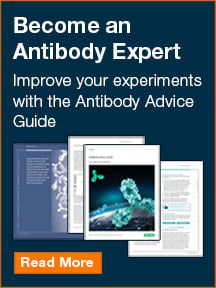Immunohistochemistry: References and Trademark Acknowledgements for IHC Tips

- On This Page
- References
- Trademarks
- Related resources
- Support
References
- Angelo M et al. (2014). Multiplexed ion beam imaging of human breast tumors. Nat Med 20, 436-442.
- Buchwalow I et al. (2011). Non-specific binding of antibodies in immunohistochemistry: fallacies and facts. Sci. Rep. 1, 28; DOI 10.1038/srep00028.
- Howard GC and Kaser MR, editors (2014). Making and Using Antibodies: A Practical Handbook, 2nd edition (Boca Raton, Florida: Taylor & Francis Group, CRC Press) pp 311.
- Howat WJ et al. (2005). Resin Tissue Microarrays: a Universal Format for Immunohistochemistry. J Histochem Cytochem 53, 1189-1197.
- Hsu SM and Soban E (1982). Color modification of diaminobenzidine (DAB) precipitation by metallic ions and its application for double immunohistochemistry. J Histochem Cytochem 30, 1079-1082.
- IHCWorld (no date a). Most Innovative and Complete Immunohistochemistry (IHC) Detection Systems. http://www.ihcworld.com/products/ihc-detection-system/Chromogen.htm, accessed July 20, 2017.
- IHCWorld (no date b). New Fuchsin Alkaline Phosphatase Substrate Solution Protocol. http://www.ihcworld.com/_protocols/chromogen_substrates/AP_new_fuchsin_red.htm, accessed July 20, 2017.
- IHCWorld (no date c). Nuclear Fast Red Counterstain Protocol. http://www.ihcworld.com/_protocols/counterstain_solutions/nuclear_fast_red.htm, accessed July 03, 2017.
- Kiernan JA (no date). Making and using aqueous mounting media. Why buy a pre-mixed medium when it’s cheap and easy to make your own? http://publish.uwo.ca/~jkiernan/aqmount.htm, accessed August 07, 2017. (This article was originally published in Microscopy Today (1997) 97-10, 16-17.)
- Kim SW et al. (2016). Immunohistochemistry for Pathologists: Protocols, Pitfalls, and Tips. J Pathol Transl Med 50, 411-418.
- Lauter G et al. (2011). Two-color fluorescent in situ hybridization in the embryonic zebrafish brain using differential detection systems. BMC Dev Biol 11:43.
- Lavdas AA (no date). Spectral Unmixing in Fluorescence Microscopy. http://bitesizebio.com/26707/spectral-unmixing-in-fluorescence-microscopy/, accessed August 07, 2017.
- Levenson RM (2015). Immunohistochemistry and mass spectrometry for highly multiplexed cellular molecular imaging. Lab Invest 95, 397-405.
- Liboska R et al. (2012). Most anti-BrdU antibodies react with 2′-deoxy-5′-ethynyluridine – the method for the effective suppression of this cross-reactivity. PLoS One 7, e51679.
- Microbehunter – Amateur Microscopy Resource (no date). An overview of mounting media for microscopy. http://www.microbehunter.com/an-overview-of-mounting-media-for-microscopy/, accessed July 11, 2017.
- McCollum L (no date). Free-Floating Versus Slide-Mounted Sections for Immunohistochemistry. http://bitesizebio.com/26549/free-floating-versus-slide-mounted-sections-ihc/, accessed June 29, 2017.
- Mueller C et al. (2011). One-Step Preservation of Phosphoproteins and Tissue Morphology at Room Temperature for Diagnostic and Research Specimens. PLoS One, 6: e23780.
- North AJ (2006). Seeing is believing? A beginners' guide to practical pitfalls in image acquisition. J Cell Biol 172, 9-18.
- Paul C (no date). Counterstaining for Immunohistochemistry: Choices, Choices. http://bitesizebio.com/13467/counterstaining-for-immunohistochemistry-choices-choices/, accessed August 07, 2017.
- Ponder BA and Wilkinson MM (1981). Inhibition of Endogenous Tissue Alkaline Phosphatase with the Use of Alkaline Phosphatase Conjugates in Immunohistochemistry. J Histochem Cytochem 29, 981-984.
- Ramos-Vara JA (2005). Technical aspects of Immunohistochemistry. Vet Pathol 42, 405-426.
- Ravikumar S et al. (2014). Mounting media: An overview. J NTR Univ Health Sci 3:S1-8.
- Van der Loos CM (2010). Chromogens in multiple immunohistochemical staining used for visual assessment and spectral imaging: the colorful future. J of Histotechnol, Vol 33, 31-40.
- Ward JM and Rehg JE (2014). Rodent immunohistochemistry: pitfalls and troubleshooting. Vet Pathol 51, 88-101.
Trademarks
- Alexa Fluor is a registered trademark of Molecular Probes Inc. OR, USA.
- DRAQ5 is a trademark of Biostatus Limited.
- DyLight is a trademark of Thermo Fisher Scientific Inc. and its subsidiaries.
- SYTOX is a trademark of Life Technologies Company.
- Tween is a registered trademark of Croda International plc.
IHC - Tips and Tricks for your Experiments



